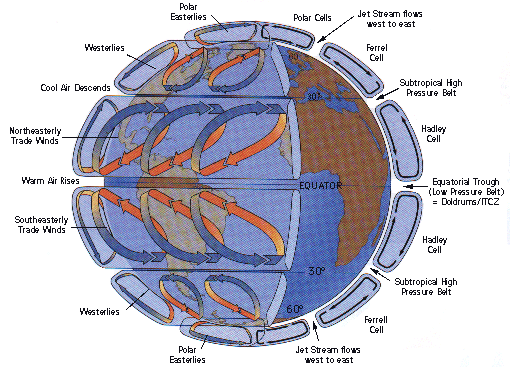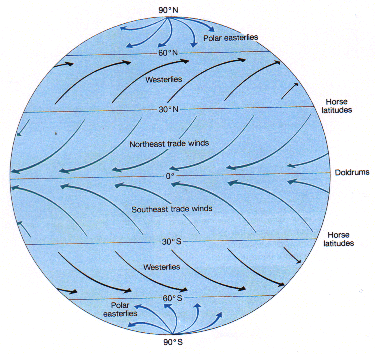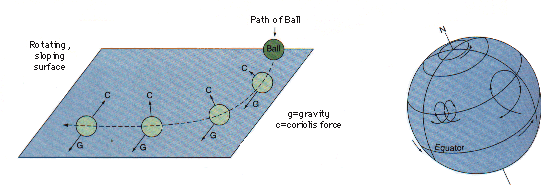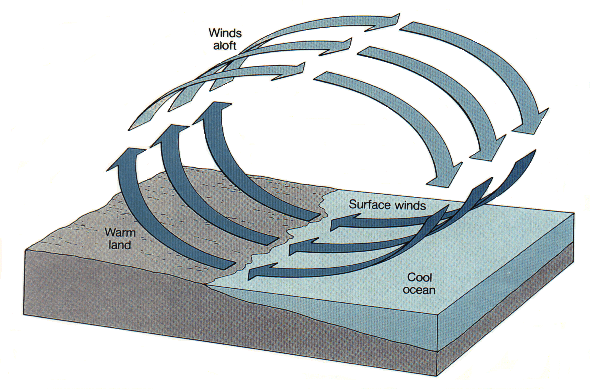

- air becomes less dense when:
- water vapor content increases (humidity);
- when it is warmed; and
- when atmospheric pressure decreases
- air becomes more dense when:
- water vapor decreases (dry air);
- when it is cooled; and
- when atmospheric pressure increases
|
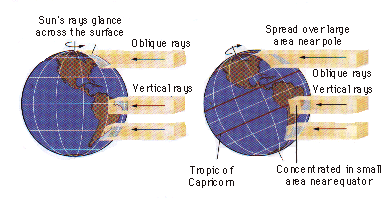
|
- mid-latitude heating is affected by season because earth's rotational axis is tilted (23.5°) -- called an orbital inclination; this affects which hemisphere is leaning towards or away from the sun during any one season
|
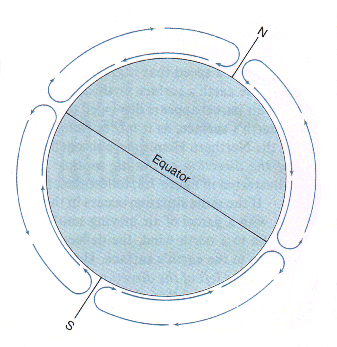 |
- BUT, due to unequal distribution of sun's heat over earth's surface, large amounts of heat and water vapor are transferred to the atmosphere around the equator; thus, equatorial regions are warm and wet while polar regions are dry and cold
- in this model earth, surface winds of Northern Hemisphere blow from north to south (northerly) and upper winds of the atmosphere blow from south to north (southerly); surface winds of Southern Hemisphere blow from south to north (southerly) and upper winds of the atmosphere blow from north to south (NOTE: winds are named for the direction from which they blow)
